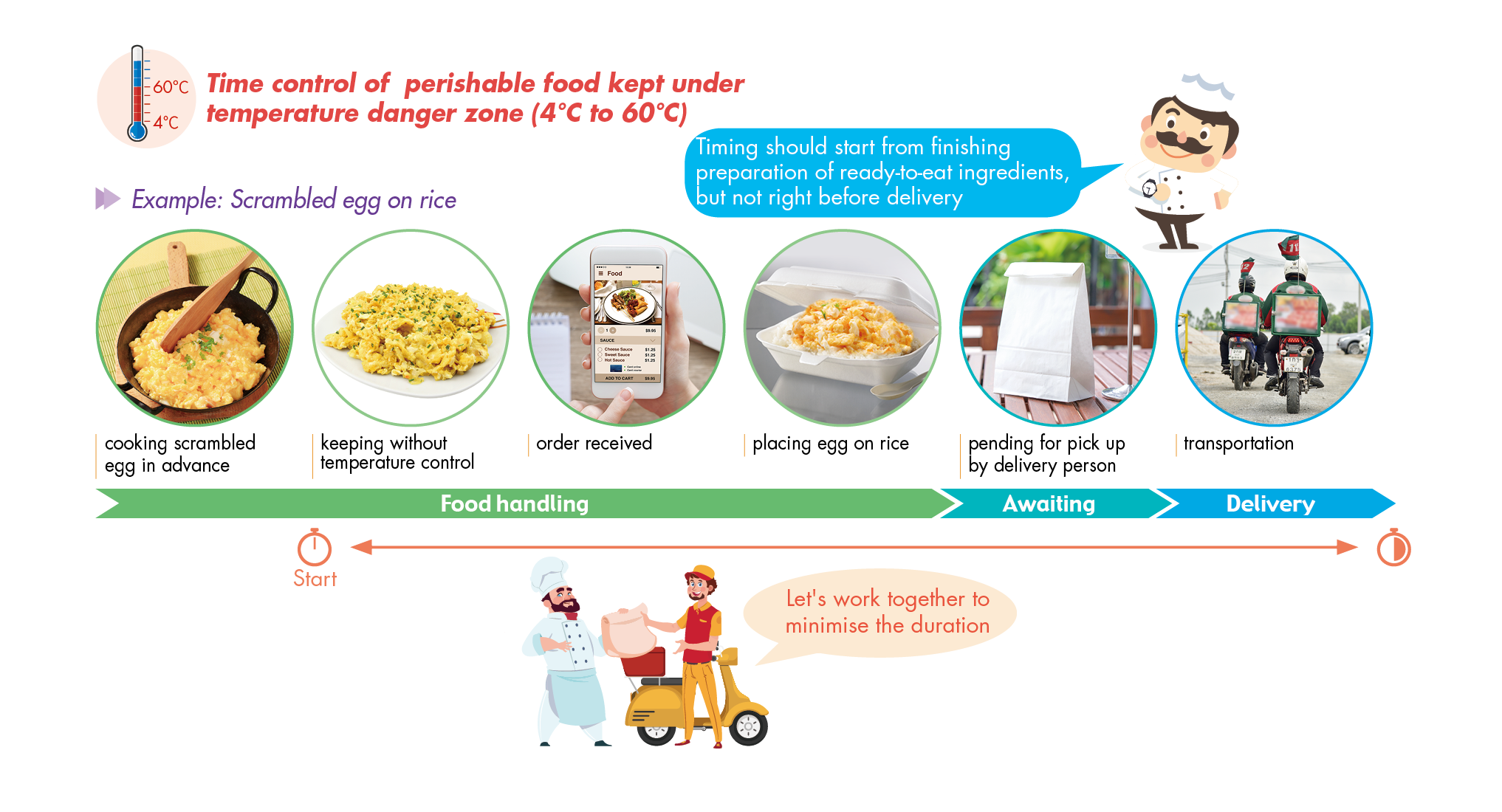
Food Safety Focus (146th Issue, September 2018) – Incident in Focus
Control for Safe Delivered Foods
Reported by Dr Ken CHONG, Scientific Officer,
Risk Communication Section, Centre for Food Safety
Background
Two food poisoning clusters involving customers consuming delivered food prepared from the same premises were reported in July 2018. In recent years, food ordering mobile apps are getting more popular. Comparing with traditional way of ordering, customers can make food orders from premises in a wider area through the apps and the courier service provided by the app companies.
Food Safety Risk of Delivered Foods
Under this operation of delivery service, comparing with traditional delivery, prepared foods may need to wait longer as delivery persons have to pick up foods from premises. In some cases, delivered foods may be purchased in bulk and delivered in insulation containers to an open area for picking up by individual customers. These may result in additional time in delivery and/or distribution. Delivered meals are usually perishable foods. If there is improper time temperature control during delivery, microorganisms including pathogen that may be present in foods can grow rapidly to a large number and make people sick. Indeed, similar to traditional way of ordering, delivering foods without time or temperature control can increase food safety risk. As such, proper time temperature control is important to address the potential food safety risk arising from delivered meals.

Example on keeping time for ordering by mobile apps.
Time Temperature Control for Safe Delivered Foods
Keeping hot food hot and cold food cold, i.e. above 60°C and at/below 4°C respectively, can keep delivered foods safe. Most pathogenic bacteria grow and multiply rapidly at temperatures between 4°C and 60°C. This range of temperatures is therefore called the “temperature danger zone”. Delivered foods can be maintained out of this danger zone by ways such as using insulated containers, keeping foods in a warmer or cooler before delivery, and avoiding preparing food too early, etc.
Under the time-temperature contral for food safety, if foods are delivered within the temperature danger zone, time control in advance will become the only gatekeeper. There are two time limits, two-hour and four-hour, for keeping perishable foods:
- prepared food should be discarded if it has been held at room temperature for more than four hours;
- if prepared food is kept at room temperature for less than two hours, it can be refrigerated for final use later or used within the four-hour limit.
The longer the time period the foods delivered without temperature control, the shorter the time left for consumers for consumption later.
Time within Temperature Danger Zone
The time for foods being kept within the temperature danger zone is cumulative, i.e. it is needed to add up each and every time period that the foods have been left under ambient temperature, including handling, storage, transportation, etc. (See figure). Individual ready-to-eat ingredient may be prepared in advance and left under ambient temperature before serving. If there is no further processing or other means to control the growth of microorganisms, the time that the ingredients have been left under the temperature danger zone should be added up to work out the total time under the two-hour and four-hour principle. As such, for food delivery, both food handlers and delivery persons have to work out the arrangement together to fulfill time temperature control requirements to ensure food safety.
Key Points to Note:
Advice to the Public
- Patronise only reliable and licensed restaurants for food ordering and delivery.
- Check general conditions of delivered foods, such as temperature, integrity of food container and hygiene condition, especially for those that are intended for raw consumption such as sashimi and sushi.
- Consumers are advised to consume delivered foods as soon as possible, especially when they are not certain about the handling time without temperature control.
Advice to the Trade
- Both food premises and delivery agents are advised to work together to meet the time temperature control requirements for delivered foods.
- Shorten the time the delivered foods left out of temperature control and remind customers to consume as soon as possible where appropriate.
- Keep records and adhere to the time temperature requirements, especially for delivered foods.

